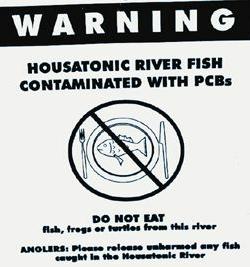|
Toxic Chemical Study Sounds Warning for Children
By J.R. Pegg
WASHINGTON, DC, February 4, 2003 (ENS) - The most extensive
study of the toxic chemicals to which Americans are exposed has found
encouraging evidence that levels of lead, pesticides and tobacco related
chemicals have declined over the past decade. But the report, released
last week by the U.S. Centers for Disease Control and Prevention, offered
worrying evidence that children are more exposed than adults to a range of
toxic chemicals.
The report is the largest and most detailed study of the U.S.
population's exposure to environmental chemicals. It analyzes exposure
information for 116 environmental chemicals, more than four times as many
as the previous study by the U.S. Centers for Disease Control and
Prevention (CDC), published in 2001, which looked at exposures to just 27
substances.

Many of the toxic substances reviewed in the study are already
restricted or banned, but remain environmental and health problems, such
as PCBs - now banned from most U.S. uses. (Photo courtesy U.S.
Geological Survey)
The CDC is an advisory agency, not a regulatory one, and its officials
stressed that the primary benefit of the report is as a baseline for
future studies.
"In order to make sound public health decisions that help us correctly
identify and prevent health problems, we must have reliable information
about exposure to environmental chemicals," said Dr. David Fleming, deputy
director for science for the CDC. "That's the purpose of the National
Exposure Report ... and this second report is a quantum leap forward in
providing objective, scientific information about what's getting into
people's bodies and how much is getting in."
"We do not have new health effects information coming out from this
report," added Dr. Richard Jackson, director of CDC's National Center for
Environmental Health. "It would not be possible to say that we have a new
understanding of health effects from exposure to chemicals. [But] this
kind of information is what moves the science forward to answer those
health effect questions, and by finding out what are in people and what
levels are typical in the population, we're moving a lot of studies
forward that will give us that information much faster."
But CDC officials are clearly concerned about the report's findings
with regards to children's exposure to nicotine related chemicals such as
cotinine.
Cotinine is a major metabolite of nicotine and regarded as the best
biomarker in active smokers and in nonsmokers exposed to secondhand smoke,
also known as environmental tobacco smoke.

Children showed far higher blood levels of a biomarker for cigarette
smoke exposure - twice as high as non-smoking adults. (Photo by
Adam Hart-Davis)
Cotinine levels for nonsmoking adults fell 75 percent, but decreased
just 58 percent for children and 55 percent for adolescents. Children had
cotinine levels that were more than twice as high as levels in adults, and
non-Hispanic blacks had more than twice the levels of either Mexican
Americans or non-Hispanic whites.
CDC officials said the overall declines in exposure level support the
effectiveness of public health efforts, but added that these efforts have
focused on adults at work or in restaurants. Further efforts to reduce
exposure to children, adolescents and non-Hispanic blacks are warranted,
Jackson said.
"One third of all of our cancers are from tobacco," Jackson explained.
"It's one of the big killers in America and more than half of our kids
still have environmental tobacco smoke exposure when environmental tobacco
smoke is known to be associated with sudden infant death syndrome, with
ear infections, respiratory infections and the rest."
"If we had to pick something to really go after, that would be one that
I would really argue is an extraordinarily high priority and something
people can actually do something about," he said.
The Second National Report on Human Exposure to Environmental Chemicals
cost the federal government some $6.5 million over two years. It analyzes
blood and urine samples that were collected from some 2,500 participants
who are part of the National Health and Nutrition Examination Survey. The
participants represent a cross section of the U.S. population for the
years 1999 and 2000.

Children, with their developing bodies and brains, are far more
vulnerable to ingested toxins than adults. (Photo courtesy National
Center for Lead-Safe Housing)
"It is an immense data set," said Jackson, adding that CDC plans to
continue issuing the report every two years and to further expand the
chemicals covered.
A total of 89 of the 116 tested chemicals were found to be present in
at least some study participants, but CDC officials cautioned that just
the presence of a chemical does not indicate a threat to human health.
Risk assessments for many of these chemicals are not know for humans, but
this study provides a vital tool for scientists to determine how dangerous
some of the chemicals are to human health.
The report found that levels of chlorpyrifos, an organophosphate that
has been used widely in the United States, are about twice as high in
children as those found in adults. Retail sales of chlorpyrifos for
residential use were stopped in December 2001 and with this report,
scientists now have a baseline for measuring the effectiveness of this
restriction.
The scope of the report will also allow scientists and researchers to
watch for trends in different age groups, minorities and genders. So far,
the researchers have learned, for example, that Mexican Americans have
three times the exposure levels to DDE, a major metabolite of the
insecticide DDT, which was banned in the United States in 1973.

Flaking paint from older buildings may contain lead. Exposure to lead
can cause permanent brain damage, particularly in children. (Photo
courtesy Medical University of South Carolina)
For lead, a toxic substance that researchers already know a great deal
about what exposure levels are harmful, the report's findings are
encouraging. Blood lead levels in children continued to decline, the study
shows.
For 1999-2000, the researchers found that 2.2 percent of children aged
1-5 years had blood lead levels greater than or equal to 10 micrograms per
deciliter, which is the CDC's definition of an elevated lead level. This
figure is down from 4.4 percent for the period 1991-1994.
CDC officials said the continued decline of lead exposure among
children in the general population is a public health success story, but
warned that lead exposure is still a serious public health threat.
"Exposure of children to lead from homes containing lead based paint
and lead contaminated dust remains a serious public health problem," said
Dr. Jim Pirkle, deputy director for science at CDC's environmental health
laboratory. "CDC and other federal partners will continue important lead
poisoning prevention programs targeting interventions to eliminate this
entirely preventable disease among exposed children throughout the
nation."

Coal burning power plants produce large amounts of mercury and PCBs,
known developmental toxins. (Photo by Carole Swinehart, courtesy
Michigan Sea Extension)
Industry groups, including pesticide manufacturers and
environmentalists, welcomed the CDC's report, although with differing
conclusions.
"The pesticide data contained in the report indicates that the American
public can be assured that the regulatory safeguards for pesticides that
are in place are very tough are working as they are intended," said Jay
Vroom, president of CropLife America, a pesticide manufacturers lobbying
organization. "Americans can be confident about the safety of our food
supply and the public health protections made possible by pesticides."
Dr. John Balbus, director of the environmental health program at
Environment Defense, said the report is further proof "that children are
more exposed to a wide variety of chemicals, from pesticides and passive
tobacco smoke to pthalates."
Balbus praised the study for providing the depth of information needed
to determine who is most at risk and what action is needed to prevent
exposures.

Exhaust from diesel buses and other vehicles contains polycyclic
aromatic hydrocarbons (PAHs), which some studies have linked to increased
risk of certain cancers. Photo courtesy EPA
"This country spends $1.4 trillion every year on health costs," he
said. "We don't know exactly what proportion of those costs are due to
environmental exposures, but we do know that health costs related to these
exposures are unnecessary and can be prevented. This report is an
important part of the small investment made to prevent illness."
"To the extent that the CDC report ... brings us good news," added Jane
Houlihan, vice president of research for the Environmental Working Group (EWG),
"it is because the government took action and regulated harmful substances
such as PCBs, DDT and lead in paint and gasoline."
Houlihan's organization, in partnership with Mt. Sinai School of
Community Medicine and Commonweal, released a report last week that also
tracks chemical absorption in humans. But rather than measuring individual
chemicals in multiple individuals, as the CDC did, EWG studied a small
group of individuals for a multitude of chemicals.
The EWG report found that its nine subjects showed evidence of exposure
to an average of 91 compounds, many of which did not exist 75 years ago.
The nine individuals were tested for 210 chemicals, which EWG says is the
largest suite of industrial chemicals ever surveyed.

Plastic trash bags and many other common plastic products can contain
toxic organochlorines - known to cause developmental and neurological
problems. (Photo courtesy Universal Plastic)
In total, the nine subjects carried 76 chemicals linked to cancer.
Participants carried a total of 48 PCBs, which were banned in the U.S. in
1976 but are used in other countries, and persist in the environment for
decades.
"The CDC's work helps us assess exposure levels for each contaminant
across the population," Houlihan said. "Our study begins to document the
complex reality of the human body burden - what we call the 'pollution in
people'."
The CDC's report is available online at:
http://www.cdc.gov/exposurereport
The EWG's report can be found at: http://www.ewg.org/
Copyright Environment News Service (ENS) 2003. All Rights Reserved.
|